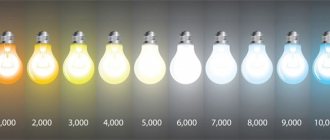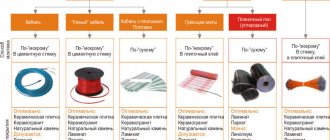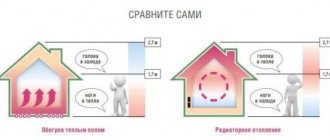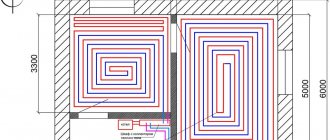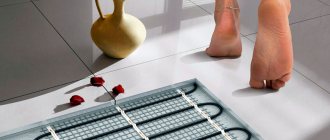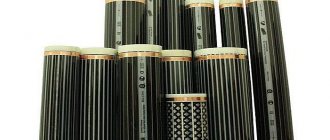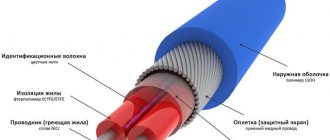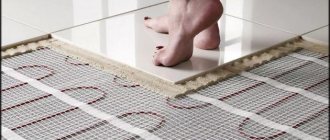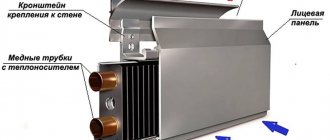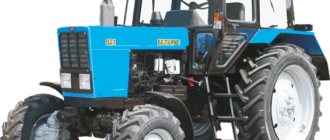Humanity knows many ways to heat a home. From stoves and fireplaces to solar-powered convectors. When choosing a heating method, various factors are taken into account:
- Room configuration.
- Availability of various types of energy carriers (solid or liquid fuel, natural gas, electricity, etc.), as well as the possibility of application at a specific facility. For example, in an apartment building it is impossible to install an individual wood-burning boiler.
- Economic feasibility: in regions, the cost of energy varies significantly.
- Possibility (and necessity) of redundant heating systems;
- Automation of heating systems - it is not always possible to constantly monitor the heating boiler.
- Aesthetic component.
We will look at a progressive technology: carbon fiber (carbon fiber) heated floors.
What is a heated carbon mat floor?
Carbon heated floors should be considered as an additional source of heat and as an independent heating system.
Panel heating of this type is available in different modifications, which allows consumers to choose the most optimal type. The system is highly adaptable and cost-effective. An innovative option for heating a home is powered by an infrared energy source. Most often, graphite-silver rods connected in parallel to each other are used for this. For this purpose, wires with an increased degree of protection against overheating are used in production.
The insulating material is a substance based on polyester and polyethylene. The main component of the product is the heating element, which consists of carbon and polymers. The cable used for these purposes is made of copper. Its cross-section is 2.5 mm. It is insulated with a shell up to 3 mm thick.
Everyone who has used carbon heated floors claims that the modern market cannot offer a more profitable option for panel heating. In a house where this type of heating is installed, natural air humidity is always maintained. An intelligent heating system with modern thermostats and temperature sensors helps with this.
All currently existing variations of carbon-based panel heating are complemented by a detailed description of the installation and operating instructions. The buyer only needs to choose the most optimal option, show a little effort in order to surround himself with warmth and comfort for a long time.
Types of carbon systems
Carbon heated floors are installed as the main heating in small rooms, or as additional heating in certain cold areas of an apartment or private house. Thermal film, sheets with a continuous coating of carbon mixture, and rods are used as heating devices. What are the characteristics of the systems?
- Thermal film is produced in rolls. It is thin, no more than 0.42 mm thick. The material is made of polypropylene. The carbon mixture is applied between the layers of film in horizontal or vertical stripes. The spraying method is used. A copper and silver heating element runs along the top and bottom edges. Electrical wires are connected to it. Depending on the floor surface, a material with a power of 100 to 220 W/m2 is selected. Thermal film is laid in a room with the correct configuration. It can be cut into strips only according to special markings, which do not allow the integrity of the carbon layer to be damaged.
- Carbon heated floors with continuous application of the mixture have the same properties as thermal film. A distinctive feature is that there are no markings on the sheets. Any contour can be cut, so the system is used to heat rooms with non-standard geometry. You can install stationary furniture on the sheets without fear that the heating element will become pinched, which can lead to overheating and shutdown of the system.
- Carbon rods increase the heating surface of the floor. They are assembled into a contour in 10 cm increments; connected by copper wire, which is insulated with a plastic coating. This coating can withstand high temperatures of more than 100 0C. The system is produced in rolls. The tape is not cut during installation. Make a cut in the wire, turn the roll in the desired direction, continuing installation.
To heat the room, it is proposed to use a rod system from Unimat; manufacturer Korea. The heating operates from a 220 V network. The maximum heating temperature of the rod is 60 0C. Average energy consumption 24 W per 1 linear. m.
When installing, it is recommended to use a reflective screen based on lavsan. A thermostat from Kaleo is installed as a control unit. The technical data sheet describes the power of the system depending on the room conditions and the nature of the finishing coating.
Scope of application of infrared film
First of all, it is worth mentioning that with the help of infrared film, not only floors are insulated, but also other elements of buildings - walls, ceilings, etc. This makes a certain sense, because heat can escape not only through the floor, but also through other surfaces.
In addition to residential premises, infrared floor heating can be used in a variety of areas:
- Greenhouses and greenhouses;
- Outbuildings intended for animals;
- Technical buildings (workshops, garages, etc.);
- Baths and saunas.
In the latter case, installing an infrared heated floor will also be good because such radiation is used to treat various diseases, and its effect in combination with hot air will be extremely useful.
In addition, infrared film can be used as heating in open areas that need to be kept clean - and these are various sports fields, runways and car parks.
Successful examples and options
A floor that maintains a comfortable temperature for your feet is the embodiment of the modern idea of home comfort. Today it is absolutely not necessary for the floor to act as a gray background.
Unusual and stylish flooring can be used as an accent.
Fans of the classic conservative style can also find options to their liking. Wherever you install an electric floor heating system: in the kitchen, bathroom or children's room, this room will become your favorite place in the house.
You can learn how to choose the right heating cable length in the following video.
Description of carbon fiber underfloor heating
The basis of a carbon heated floor is a cable with carbon fiber winding
The basis of the electrical system is the heating cable. When turned on, the electric current heats the wire, it transfers heat to the floor surface, and the latter releases it to the air in the room. This option has 2 disadvantages. The cable resistance practically does not change with increasing temperature, so it is impossible to regulate the degree of heating along the length of the cable. More importantly, heat transfer occurs in 2 stages, which increases electricity consumption.
The first problem is partially solved by laying the cable in loops at regular intervals. This is not entirely convenient, since only modules of a certain size are received. During installation they have to be joined to each other. The standard modification does not solve the second problem.
The design of a carbon heated floor is devoid of these disadvantages:
- The basis of the floor heater is carbon rods. Carbon is an amorphous carbon, it has high electrical resistance - when an electric current passes, it becomes very hot and emits thermal radiation in the range of 5–20 microns. Infrared radiation transfers heat to objects and objects, and not to the air - such a system heats the floor, furniture and people in the room, and the air is heated secondarily. To increase the efficiency of the heater, elements made of graphite and silver are included.
- Carbon rods are assembled into blocks and interconnected by multi-core copper cables in polymer insulation. The area of such a structure is practically unlimited.
- The role of temperature regulators is played by polymer inserts. When the air temperature reaches a threshold value - from +18 to +22 C, the material increases in volume, which leads to an increase in electrical resistance. In this case, the current strength drops and the heating temperature of the rod decreases.
Carbon heaters generate thermal radiation. The air heats up slightly and retains natural humidity.
Specifications
- Operating voltage – 220 – 230 V;
- System power per 1 m² – 220 W;
- Surface heating temperature 45 - 50°C;
- Thickness no more than 0.5 mm.
Heating element device
A film heated floor consists of two layers of polymer film, between which strips of carbon material are included. The polymer material provides waterproofness, mechanical strength and safety in case of local overheating. Strips 1.5 cm wide are connected in parallel to copper-silver busbars, which conduct electric current. With this connection scheme, the strips heat up independently of each other, and if a problem occurs in one of the strips, all other strips of the system continue to work. In the event of a failure in one segment, to eliminate the malfunction, you will have to open the floor only in this area, and there is no need to dismantle the floor covering in the entire room. When reconstructing a floor or part of it, infrared film can be dismantled, moved and installed in a new location.
Diagram of an infrared heated floor
Cable for water supply and sewer pipes
Water pipes, hydrants in unheated buildings or located in completely exposed areas can be protected from freezing by using resistive heating cable.
The power required to prevent freezing depends on the size of the pipe, the minimum ambient temperature, and the desired water temperature (-3 degrees Celsius to prevent freezing), as well as the pipe insulation.
Of course, you can slightly increase the amount of heat if you wrap the electrical wire in a spiral around the pipe, but this way you will waste more wire, and therefore more money.
Assuming a permissible temperature difference of 15 degrees temperature difference F (pipe temperature = -3 degrees Celsius, and outside air temperature = -20 degrees), we would have to wrap a 10 cm length of uninsulated pipe with a cable with a capacity of about 12.3 Tue. If the pipe is wrapped with at least a 4-centimeter layer of insulation, then 3.7 watts per 30 cm of pipe length is sufficient. It should be noted that an insulated surface is more effective because no high heat loss. The correct calculation is made with the participation of a specialist and the availability of a communications drawing.
Photo - Table of approximate cable values
If the cable is shielded (Easyheat, Nexans, Pipeguard, Selftec, Elektra, DTCE, Thermocable, Defrost), and the pipe is with a thermostat, then you can find a middle ground and use a 5-8 W cord on insulated pipes, regardless of the length.
Photo – Spiral of cable along a pipe
Once the pipe is insulated, place a cable thermostat near the pipe to protect the pipe insulation from moisture so it will maintain its efficiency. But PVC wire has fairly high waterproof properties and does not need this action. If lead insulated wire is used, do not attach it too close to the thermostat.
For maximum savings, you need to insulate the entire water pipe. Then select the correct length and type of heating cable, first by measuring the diameter and length of the pipes, and then calculating the optimal voltage. When purchasing a heating element, be sure to check with the seller or manufacturer about its minimum and maximum permissible temperatures.
Photo - Cable inside a pipe
Main types of graphite heated floors
Rod heated floor is mounted in a concrete screed
There are 2 main types of heaters: film and rod. These also include bimetallic and amorphous floors. However, these 2 options do not include carbon elements. Although their principle of operation is the same: radiation of infrared heat.
We recommend: Classification of radiators
Rod mats
Rod heated floor is a wire mat, 83 cm wide, the number of rods in 1 linear meter is 10. The structure is spread on a prepared base of any area. The sections are joined to each other using connecting kits.
Rod mats are laid under any, even the most capricious material: tiles, laminate, wooden flooring, parquet. Prerequisite: the heater is placed in a layer of concrete screed or tile adhesive. The subfloor is thermally insulated.
The advantage of the product is the possibility of self-regulation. The carbon fiber rod floor is not afraid of pressure, since its design prevents overheating of the wire. If an area is temporarily covered with furniture, heat transfer from it decreases. At the same time, the rods reduce energy consumption and cool down. In areas where the surface cools faster, the elements heat up more.
The level of electricity consumption is determined by the heating temperature - from 110 to 180 W per linear meter.
Film mats
Film heated floor coated with carbon material with graphite impurities
The design of the product is significantly different. The basis of the heating element is still carbon or a mixture of carbon and graphite. The composition is sprayed onto a base made of heat-resistant polypropylene, forming conductive paths. The base is covered on both sides with a two- or three-layer film and sealed. The material can withstand heating up to 120 C and is not afraid of water or moisture. The width of the strip is 50–100 cm. They are connected to each other by copper busbars.
There are several methods of applying carbon:
- Continuous film - carbon fiber is applied to the entire area of the base. The heating speed of the heater is as high as possible, energy consumption is lower. If any areas are damaged, the performance of the system does not change.
- Perforated - stripes and circles are formed in the continuous coating, where there are no heating elements. The modification is designed for installation in screed or under tiles.
- Perforation in the form of a honeycomb is a variation of the previous one.
- Striped - a classic version in which stripes of different widths are formed on the substrate. The power of IR film depends on their size.
Installation of IR film is extremely simple and convenient. It is very thin - 0.23–0.47 mm, it is laid without a screed. The film can be cut into pieces of any size and heat the smallest areas and even staircase steps. If any section fails, the rest of the floor continues to operate as before, and the damaged fragment can be replaced at any minute.
However, the film version has many limitations. It cannot be laid under porcelain stoneware or tiles, since “wet work” and IR film are incompatible. The exception is the perforated modification. But its use is, rather, a forced decision. Flooring made from materials that conduct heat poorly, such as carpet, linoleum on a felt base, is not suitable. In this case, the heat is absorbed by the coating.
Film heated floors can be dismantled, transported to another location and reinstalled in another room.
Main characteristics
The characteristics of carbon rod and film heated floors depend to some extent on the manufacturer. The average values are given in the table.
| Options | Rod | Film |
| Thickness, mm | 3,5–5 | 0,23–0,47 |
| Power consumption, W/sq. m. | 125-170 | 130 |
| Energy consumption per 1 sq. m, W/h | 20-50 | 25–33 |
| Heating temperature, C | 60 | 33 |
| Roll length, m | 25 | 50 |
| Roll width, cm | 83 | 50–100 |
Power consumption is indicated at maximum heating temperature. For IR film this parameter varies. The power of the rod mat depends on the nature of the heating elements. Incorporating silver with graphite increases system efficiency and reduces energy consumption.
Why is this heated floor better than others?
Carbon fiber floors can be used to heat indoor and outdoor areas. Their advantages:
Self-regulation
These are “smart” systems that control temperature and, accordingly, energy consumption without installing complex, expensive equipment. The higher the temperature, the more the distance between the particles of the heating elements increases, and the heating is automatically reduced due to increased resistance. Thus, energy consumption is reduced. When the temperature drops, the reverse process occurs.
In areas of the floor with increased load, for example, in places where furniture is installed, the system will heat up significantly less. Rearranging furniture and heavy objects is not a problem; no additional heating protection measures are required.
Reliability and safety
Since the infrared carbon floor cannot overheat due to its thermoregulation features, there is no risk of damage or deformation of the floor covering. The heating system is extremely reliable and does not fail.
Infrared radiation from a heated floor has no negative side effects; it is used in chambers for premature babies for gentle heating of babies and a healing effect. The scope of application of infrared systems is constantly expanding. They are used in spas and infrared saunas.
Economical
The power of the carbon floor is 116 watts per linear meter. When the layer of tile adhesive or screed in which the systems are installed warms up, power consumption decreases. Typically it is 87 watts per linear meter.
To ensure maximum control over energy consumption, thermostats are installed. This allows you to save up to 30% on energy costs. Today, carbon floors are the most economical of all heating systems.
Carbon heating allows significant savings on energy costs. Systems are ultra-reliable and safe
Preparatory work before installation
Before you start installing heated floors, make sure that you have all the necessary materials:
- A large number of carbon mats. During the calculation, it is necessary to take into account that the coating can be cut and laid in any desired direction.
- A sensor that measures the floor temperature.
- Required number of UTH thermostats. It must be remembered that they are selected taking into account the power consumed by the film floor system.
- Temperature sensor responsible for activating the “overheating protection” mode.
- Thermal reflective material for the substrate. Allows for more beneficial use of the system by reflecting downward heat radiation.
Before laying underfloor heating
you need to prepare the surface
Important: A specialized coating based on polypropylene or lavsan film is used as a substrate. The use of aluminum-based foil, which can cause a short circuit and failure of the system, is absolutely prohibited.
Carbon and carbon underfloor heating - what is the difference?
Carbon is the international name for all composite materials, the basis of which is a carbon nanostructure and various binding components. Thus, what is known to domestic consumers as carbon and carbon are one and the same substance. Those. film carbon floor and film carbon floor are the same system.
Manufacturers offer two types of carbon floor systems:
- film carbon heated floor (solid);
- rod carbon heated floor.
There are two more types of carbon floors on the market:
Bimetallic heated floor
Bimetallic heated floor Heating system based on bimetallic film. A distinctive characteristic of carbon film is a patented two-layer compound (the top layer is an alloy of copper and additives, and the bottom is an alloy of aluminum with additives). Heating plates emit waves in the infrared range. Such a warm floor should only be laid “dry”; it is prohibited to lay it in a screed or in tile adhesive.
Amorphous heated floor (ANT)
Amorphous heated floor (ANT)The Israeli company Advanced Heating Technologies (AHT) Ltd has developed a new technology - a heated floor based on an amorphous metal strip. The main feature is fire safety, because floors do not heat up above 35 °C (for example, cable floors can heat up to 60-70 °C). Made in the form of thin heating mats. The heating element is made of amorphous metal (ultra-thin tape, 30 microns thick). Warm floors on amorphous tape can be installed under all floor coverings (tiles, parquet, laminate, linoleum and carpet).
Properties of film CTP
Film carbon heated floor heats up quickly and evenly. It can function continuously for quite a long time, is very durable, is not afraid of mechanical stress and is not subject to corrosion.
Due to lamination into a special film, the possibility of water and steam getting on the contacts is completely eliminated. The film is also fireproof and has a high melting point (120 degrees).
A significant advantage is the mobility of film CTP. It can be easily dismantled and taken with you when moving, used on walls, inclined surfaces and heated individual areas of the apartment.
Absolute noiselessness, the ability to ionize air and hygiene make it possible to install film carbon heated floors in medical institutions.
How to determine the film size?
Due to its design features, this type of heater is cut in increments of 25 cm. The maximum length of use of one tape should not exceed 7 meters.
Heating film width - 0.5 m. Voltage 220 V. Length
Power
Length
Power
Length
Power
| Film - 0.25 m | 27.5 W | Film - 2.75 m | 302.5 W | Film - 5.0 m | 550 W |
| Film - 0.5 m | 55 W | Film - 3.0 m | 330 W | Film - 5.25 m | 577.5 W |
| Film - 0.75 m | 82.5 W | Film - 3.25 m | 357.5 W | Film - 5.5 m | 605 W |
| Film - 1.0 m | 110 W | Film - 3.5 m | 385 W | Film - 5.75 m | 632.5 W |
| Film - 1.25 m | 137.5 W | Film - 3.75 m | 412.5 W | Film - 6.0 m | 660 W |
| Film - 1.5 m | 165 W | Film - 4.0 m | 440 W | Film - 6.25 m | 687.5 W |
| Film - 1.75 m | 192.5 W | Film - 4.25 m | 467.5 W | Film - 6.5 m | 715 W |
| Film - 2.0 m | 220 W | Film - 4.5 m | 495 W | Film - 6.75 m | 742.5 W |
| Film - 2.25 m | 247.5 W | Film - 4.75 m | 522.5 W | Film - 7.0 m | 770 W |
| Film - 2.5 m | 275 W |
We recommend: Operating principle of infrared heaters
Thermal dynamics
This indicator characterizes the rate at which the heating element gains temperature and transfers it to the serviced space:
Expert opinion Vadim Savelievich Grebnev Heating systems installer
For electric heated floors of all types, it is also possible to use power and temperature control by periodically turning on the heating element. However, transient processes in this case reduce the service life and reliability of the system. Therefore, manufacturers recommend using not a pulse mode for regulation, but power regulators that change the supply voltage at the system input.
Manufacturers of IR underfloor heating
The construction market currently offers many models of infrared warm coatings from various manufacturers. At the same time, many of them are little known to a wide range of consumers, and therefore the reliability and effectiveness of such products are not guaranteed.
If you want to purchase high-quality products from well-known companies, then the lion's share of the market here is occupied by branded products from South Korean manufacturers, although there are also products produced in other countries, including Russia. Some of the more well-known brands can be briefly seen below.
Caleo is a manufacturer of infrared heated floors from South Korea. The products of this company have earned popularity due to their high quality and efficiency, but there is an important point that must be taken into account when choosing it: due to its very small thickness (0.42 millimeters), infrared film requires great care and precision when installing.
Marpe High Quality - innovative infrared coating from South Korean. It is characterized by high efficiency and economical energy consumption, and has a warranty period of 15 years.
Teplofol-nano – infrared film floors made in Germany and Russia. They are an innovative development: they are only 0.2-0.4 millimeters thick, and the heating element in them is aluminum. The warranty period is 7 years.
RexVa is another South Korean brand whose products are of high quality. The warm floors of this company are reliable and have an affordable price, which makes them popular in Russia and the CIS countries.
Slim Heat - film heated floors produced by a group of Russian companies. The warranty period is 7 years.
Heat Plus is another South Korean manufacturer whose products are very widely represented on the Russian market. Warm floors from this company are characterized by economical energy consumption, reliability and safety. The warranty period is 10 years.
Of course, infrared heated floors, for all their advantages, are far from the only option for efficient and convenient heating in the house. There are many other very practical heating systems: water heated floors, central heating, heating mats, cables, etc. They all have their own advantages and disadvantages, a comprehensive assessment of which determines the choice of the optimal option in each specific situation.
Manufacturers (Unimat, Kaleo)
Today, among the manufacturers of carbon core heated floors, the leading Korean companies are Unimat and Kaleo.
Video
Rod carbon heated floor gtmat Caleo – installation from Master Tiler
Unimat
Unimat specializes in the production of warm electric floors. Two types of rod heating devices are produced under this brand:
- Rail Unimat - has a simple design, the width of which is 830 mm. The product has a power of 120 W. Installation under tiles using adhesive or a small layer of screed is recommended.
Important! The floor covering layer must have a thickness of at least 2 cm.
- Unimat Boost is a distinctive feature of this model, the presence of a smaller pitch (9 cm). Model power 160 W. It is capable of heating a large area.
All models include mats, fasteners, wires, corrugated pipe, and the “End” kit. In addition, there is a warranty card, manufacturer’s instructions and a video with a step-by-step installation process that will help you do the floor yourself.
Kaleo
Kaleo is a leading manufacturer producing these heating devices. The company's products are high quality, long service life, reliability, and affordable price.
The products are manufactured using high-tech methods, which ensure fire safety and prevent overheating during operation.
Kaleo systems are characterized by quick installation. You can build such a floor with your own hands, without the help of specialists, within 2 hours.
There are models from this manufacturer that have increased functionality; they are also called “Smart Floors”. They are recommended for heating large areas in order to save money (cottages, offices).
Installation of infrared floor
An important quality of a film heated floor is the fact that it does not require a new foundation. It will be enough to repair, clean and level the old coating. All necessary work can be divided into several stages, which will be discussed further.
Material and tools
Having decided to install a rod floor, you need to buy the selected model, which includes all the components for arranging the structure.
In addition, you need to purchase:
- substrate;
- heat shrink tubes;
- thermostat;
- sleeves;
- wire for connection having double insulation.
For tools, you should stock up on scissors, wire cutters, a knife, a screwdriver, and tape. You will also need a hair dryer to warm up the heat-shrinkable pipes.
Preparing the base
Before laying, it is necessary to properly prepare the concrete base. First, you need to vacuum it - in addition to directly cleaning, this will reveal various damage to the base that needs to be repaired. Particular care must be taken to deal with the cracks at the junction of floors and walls - it is through them that most of the thermal energy usually escapes.
Any cracks and crevices need to be widened and cleaned. To eliminate them, special repair mixtures or regular sealant are most often used. To fill large damage, you can use foam. In any case, after the mixture used has hardened, it is necessary to cut off its remains, after which you can move on.
Insulating material is laid and fixed on top of the cleaned base. As a rule, in the case of infrared heated floors, foamed polyethylene is used, the characteristics of which are best suited for such situations. The material is attached to the base, and the sheets themselves are connected to each other with special tape. This insulation will preserve the film, providing a level base.
Installation of heating elements
On the finished base, it is worth marking in advance all the areas on which the film will be placed. In addition, it is worth noting the parts of the floor intended for installing furniture, so as not to install heating in these places.
In accordance with the markings, you need to cut the film into suitable pieces. You need to cut it clearly along the lines, without deviating from them, and with caution - a film cut in the wrong area, at best, simply will not work.
The prepared infrared floor film is laid in the desired areas. Tape or hot melt adhesive is suitable for fixing the material. It is imperative to pay attention to the location of the copper strips - they must be located at the bottom.
Grooves are cut into the insulating layer for laying the cable, terminals and temperature sensor so that these elements do not stick out above the film. It is best to position the temperature sensor taking into account several indicators: firstly, the original wire should be enough, secondly, the distance to the wall should be at least 50 cm, thirdly, the device should be located in the center of one of the heating strips.
After installing the sensor, you need to connect its cable to the thermostat. Now you can attach and crimp the terminals to the contact bars. Next, the wires are connected to the terminals.
Having finished laying all the elements of the system, you need to insulate all connections using special overlays. The insulation will ensure the tightness of the contacts. The same must be done in the places where the film was cut - the exit points of the copper bars must be closed.
We recommend: Copper pipes for heating: price, features, advantages and disadvantages, popular manufacturers
All wires are attached to the thermostat. To understand how to do this, it is better to look at the corresponding photo for clarity. After this, the thermostat with the junction box must be mounted on the wall. Next, the design needs to be checked for correct connection, and only after that can it be launched to test its functionality.
Connection
Connecting a device consists of several stages:
- Installing the thermostat at the planned location.
- Electrical diagram connection:
- stripping the cable at the cut points by 1 cm;
- installing the contact (it is included in the kit) on the stripped end of the cable; it should be clamped well with pliers;
- connection to the second contact - is made by passing the wire through a heat-shrinkable tube, and bringing and fixing it to the terminal; the insulation is first removed from the cable;
- heating the heat-shrinkable tube with a hairdryer;
Thus, the entire system is assembled.
- Placement of the temperature sensor - it is better to install it in a corrugated pipe. To do this, a recess is made in the insulation layer into which a corrugation with a sensor inside is placed. A cable is pulled from the device and connected to the thermostat.
The wires coming from the core floor are connected to the thermostat terminals. At this point, the connection of the rod-heated floor is completed, and you should check its operation. The system turns on for several hours; it is possible to leave the floor on for a day.
What should not be included in a set of infrared mats
Today you can find many fake rod-based heated floors that do not meet safety requirements and can lead to short circuits, fire and other negative consequences.
Such fakes can be easily identified by the composition of the kit:
Characteristics of rod heated floors
- the width of the mat is usually only 80 cm, but should be 83;
- Self-tapping screws were used to connect the rods (and in the original models, copper staples). Self-tapping screws quickly oxidize and damage the rods;
- unpleasant odor during inspection. Before pouring the screed, any rod-based heated floor must be checked for serviceability by turning it on at full power for several hours. During operation, fake mats will have an unpleasant odor, similar to burnt plastic;
- lack of brand markings, instructions and a disk with installation instructions.
What finishing coatings are suitable for infrared floors?
The top finishing layer for an infrared floor can be any covering: tiles, porcelain stoneware, parquet, linoleum, laminate, and so on. In this regard, it is worth noting that when choosing laminate or linoleum, you will no longer have to install a leveling screed. The work is carried out using the dry method. At the same time, most people consider it necessary to use such a system under tiles, which, in principle, for many seems to be a cold material, but has high thermal conductivity and, when paired with underfloor heating, creates an excellent insulating effect, which is highly valued in rooms such as kitchens, bathrooms and corridors, where Additional heat is always needed.
Any flooring can be used for infrared flooring
At the same time, it is necessary to take into account the fact that the top covering, arranged according to the heating system, is divided into hard and soft materials. For certain types of coatings, there is a separate system for installing heated floors with the selection of a specific model and, accordingly, technology option. For example, rod models of self-regulating samples are more suitable for the same tile. But soft materials (for example, you can take laminate or linoleum) require the installation of film IR floors with the obligatory laying of an intermediate layer of plywood sheets or fibreboards.
Floor installation work can be carried out using the dry method.
Features of care
The main advantage of a carbon floor is the absence of special maintenance requirements.
Once you have done the correct installation, you don’t need to worry about the need for repairs later. In order for the carbon base to serve for a long time, it is worth following the manufacturer’s requirements regarding exposure after installation. Thus, the waiting time after laying a warm core floor under the tiles is 28 days. This means that it is undesirable to use such a device before the specified period.
Furniture cannot be placed on top of the film covering. While any furniture can be installed on top of the rod. The quality of heating will not deteriorate, and the furniture will not heat up.
The manufacturer guarantees a minimum shelf life without repair - at least 10 years. Some models come with a 20-25 year operational warranty.
Safety precautions when installing infrared heated floors
During the installation process and when using film heated floors, certain safety rules must be observed:
- Before installing the system, it is necessary to clean the base from any contaminants, after which it is advisable to lay thin insulation on it;
- Film strips must be laid no closer than 10-20 cm from the wall, but no further than 40-50 cm;
- It is forbidden to lay infrared film overlapping - this can lead to dire consequences;
- The thermostat should be mounted from the floor at a distance exceeding 10-20 cm;
- The length of one canvas should not exceed 8 m;
- The longer the length of the blades used, the fewer contacts will be required;
- For safety reasons, individual strips of infrared flooring must be laid with a distance of at least 5 mm;
- The terminals themselves must be mounted so that one part of the contact is located on top of the film, above the conductive layer, and the second is inside the film, for which there is a special cavity in the latter;
- Having mounted the contact, it must be crimped using special tools for crimping contacts or ordinary pliers;
- Before installation, you should study the instructions - for some designs you can only use “your own” clamps, which are included in the kit;
- When cutting the film, the contact buses must be covered with bitumen insulation, which also comes complete with the rest of the structural elements;
- The thermostat can be connected in two ways: firstly, directly to the mains on a permanent basis, secondly, using a separate grounded cord;
- When connecting the thermostat and the film, it is necessary to lay the wires in such a way that they do not intersect each other;
- Under no circumstances should any other heating devices be placed above the film heated floor;
- It is highly undesirable to install the film at low temperatures or high humidity in the room;
- Bends of the film are unacceptable, otherwise its performance will be in great doubt;
- The film cannot be fixed using metal fasteners (nails or self-tapping screws).
Carbon cable
As I already said, I bought it on ALIEXPRESS (that is, it is Chinese). The resistance was 33 Ohms, the cable itself is called 12K. This is now the most common option. Of course, there are 66 Ohms and other resistances, but they are not time-tested. My tiler has already bought this one many times, and there have been no problems from different sellers.
I took the largest skein of 100 m, it cost me about 1,700 rubles (which is already much cheaper). 100 meters of carbon cable is enough for about 10 – 12 square meters. If we take the usual metal version, then 6 square meters costs about 6,000 rubles, that is, 10 m2 - 10,000 rubles, which is about 6 times more expensive!
Carbon fiber consists of : the central part is actually carbon (or as many call it carbon) threads, they are thin and soft, somewhat similar to a pencil lead (only they do not break, but bend in different directions).
The upper part (shell), made of fluoroplastic, can withstand temperatures of 200 degrees Celsius. The cable is thin, about 3 mm in diameter, bends quite well
About consumption . A slightly different logic works here than with a metal heated floor. With a carbon cable, the longer the segment, the less electricity it consumes (so 100 meters takes only about 20 W).
Now you’ll think it’s an ideal option, but no big deal, it practically doesn’t heat up, God forbid it reaches +10 degrees.
To achieve a normal temperature , you need to make segments of 10 - 15 meters:
- 10 meters consumes about 140 - 150 W, but it also heats up to 68 degrees
- 12 meters - approximately 110 - 122 W, warming up + 48 degrees
- 15 meters - about 90 - 95 W, heats up to + 31 degrees
Measurements are approximate + - 2 W.
I also want to warn you, a 6-meter segment consumes approximately 250W, but instantly heats up to + 200 degrees, then the braid begins to burn. Is it dangerous! I do not recommend sections for tiles of less than 10 meters.
How does it connect? It is clear that simply connecting it to a metal cable from the wiring will not work; I repeat once again, a carbon cable is soft. Therefore, the kit includes hollow sleeves, as well as heat-shrinkable tubes.
It is attached very simply, we insert on one side the sleeves, the carbon fiber stripped of insulation, and on the other side the stripped wiring power cable. Next, all this is crimped with pliers (or another tool), heat shrink is put on and melted. The result is a very strong and secure connection.
Limitations and Disadvantages
- IR film transfers heat to the floor covering. Constant and prolonged heating of laminate, linoleum or parquet leads to color fading. The coating may also deform and become unusable earlier than the manufacturer declared. Justification: This is a problem with all heated floors.
- The furniture gets hot. To avoid fires, it is recommended not to lay film under heavy interior items at all. Exit: there should be a gap of 10-15 cm between the floor and the furniture set: cabinets, sofas and bedside tables are placed on legs.
- IR heaters are initially spread locally on a free surface. Changing the surroundings and heating zones is a difficult process.
- The heating system depends on the electrical network. No electricity - no heat.
- It is dangerous to use in rooms with high humidity (bathrooms).
- If you close the temperature sensors, they transmit distorted data to the thermostat and problems begin in the system.
Infrared heated floors are widely used in apartments in country houses or cottages, in kindergartens and orphanages, shopping centers and industrial premises. They are equipped with outdoor sports grounds and used in agricultural facilities: incubators, nurseries, etc.
As a result, mobility, reliability, ease of installation and noticeable savings have made warm infrared floors one of the most popular even among radical skeptics.
Features of system operation and repair
A warm floor made of carbon film or rods certainly makes the room more comfortable. Therefore, there are more and more adherents of this type of heating. But questions about the likelihood of breakdowns and possible repairs worry potential users of the equipment.
Rules for using heated floors
In order for a warm floor made of carbon material to last the entire period declared by the manufacturer, you must adhere to the rules of its operation. All this is described by the manufacturer in the instructions for the specific product. It is important that the underfloor heating system has all the documents and certificates of conformity confirming its quality.
The accompanying documentation of the film and rod carbon floor will describe how to use it correctly
After all, each manufacturer has its own technical characteristics of the material. But there are general rules, the observance of which is advisable not to neglect.
Firstly, you need to wait for the time after installation recommended by the manufacturer. This means that you can use the heated floor only after the specified period has expired. For example, for rod mats laid under tiles, the waiting period is from 28 days. Only after complete drying can you begin to use infrared heating installed in the floor.
Secondly, it is important not to ignore the installation requirements specified in the instructions. If the system is not equipped with a thermostat and temperature sensor, then you must definitely purchase them. Otherwise, nothing worthwhile will come of the idea of installing infrared heated floors.
It is important to install the temperature sensor according to all the rules. Also, you cannot place furniture on top of it - this is fraught with malfunctions in its operation and receiving unreliable information about the temperature conditions in the entire room.
Thirdly, when using film material, it is better to avoid placing it under bulky furniture - cabinets, sofas, chests of drawers. In the case of a rod floor, you don’t have to worry about the future arrangement of the furniture - this system is more advanced and capable of self-regulation.
Fourthly, cleaning can and should be done. Cleaning a room with heated floors should be done as it was before their installation. Material laid under tiles, laminate or parquet is not afraid of wet cleaning and treatment with special products intended for the care of decorative floor coverings.
Troubleshooting
The question of possible failure of carbon heated floors worries not only real, but also potential users. Although the manufacturer guarantees 10 or more years of trouble-free operation of the system, thoughts about repairs come in advance.
Due to the design features of the infrared floor, if a certain section fails, the entire system will not be affected. A breakdown will only affect the lack of heating of the floor under the broken segment. All other coverage will work as usual.
When several sections of the system, the functioning of which is extremely important for the consumer, have stopped working, repair work has to be carried out.
The complexity and cost of repairs will depend on the type of material used in the installation of the infrared heated floor
If we are talking about the rod version, then, when purchasing high-quality original equipment, the warranty is about 10, and the service life is from 25 years. But if you purchase a cheap analogue, you can observe the failure of individual rods within 1-1.5 years. As a result, 3-4 years after the start of operation, half of the heated floor may cease to be so.
To fix everything, you will have to completely remove the decorative coating and change parts of the mat or completely dismantle the entire system. This is a rather labor-intensive process, because the installation was done “wet”. Therefore, when choosing a rod carbon heated floor, you should carefully check the accompanying documentation so as not to buy a fake.
Repairing an infrared film heating system will not require a huge investment of time and money. In this case, you will have to remove the laminate or linoleum and replace the part that has failed. It is easy to do such actions if the carbon film was installed dry.
If a carbon film with perforations was used, on top of which a screed was poured or tile adhesive was applied, then if a large number of areas fail, a major repair of the floor will have to be carried out
We suggest that you familiarize yourself with the rules and principles of installing infrared heating in a country house. They are described in detail in the article we recommend.
Continuous film technology
A separate product segment on the market is solid carbon heated floors. This is a development of film track technology. This is a rolled material, the central layer of which is a resistive element.
It is protected on both sides by an insulating film (the description is simplified, the number of layers of the resistive structure is at least three, the protective layer is on average 5 on each side).
When voltage is applied, the entire area heats up, releasing heat by convection and infrared radiation. This technology differs from its predecessors in several advantages:
- Power consumption drops sharply, up to 2-3 times compared to track technology and up to 4-5 times with cable heated floors;
- does not have such a characteristic as the distance between heat transfer zones. It always forms a uniformly heated surface;
- It is very difficult to damage the heating element. To do this, you need to cut it perpendicular to the line of connection of the connection points. This is impossible to do in most cases, so the failure rate of the heating system is low;
- the heater is offered with different levels of moisture protection;
- easy to install with your own hands;
- To install a heating system, you only need a reliable, strong base and a minimum layer of finishing coating, which can be laminate, linoleum or carpet.
Operating principle
The functioning of heating cables requires the ability of their material, which is a special alloy, to convert electricity into heat. All of them have maximum moisture resistance, and their power is in the range of 10-30 W per 1 meter.
As for the forms in which such cables can be presented, these are:
- coils;
- sectional systems;
- rolls (mats).
The latter option is secured with a snake on a reinforcing mesh, which can be cut, but on the condition that the wires providing heating and power are not affected. Thus, heating mats allow you to easily bypass furniture, appliances and other interior items. In most cases, such heating systems involve the use of a two-core resistive cable, and the termination of their supply conductor is carried out using a heat-shrinkable tube.
It is also worth adding that the heated floor includes:
- cable;
- temperature controller – manual or program controlled;
- temperature sensors - internal or external.
As a rule, at maximum load the cable heats up to a temperature of 60-65°C. Its standard values, relevant for normal everyday use, are much lower - about 30°C.
Types of electric films
The film floor is distinguished by its low thickness: heating elements measuring about 3 microns are sealed into a high-strength film on both sides. Current passes through elements that produce heat. Today, there are two types of film floors, differing in the material of manufacture and operating principle:
- Bimetallic. During the manufacturing process, an aluminum or copper conductor is sandwiched between layers of high-temperature polyester. The conductor is not an ordinary cable core, but several thin strips. The strips are laid at a short distance, which gives the impression of a single plate. The principle of heating is to heat the conductor, which transfers heat to the floor surface, which transfers it into the room. It is not recommended to use this film under tiles; it is more suitable for dry installation (under laminate, carpet, linoleum).
- Infrared. The heating element is carbon or graphite rods sealed in a durable film. Heating occurs due to the radiation of infrared waves. They are believed to have a healing and beneficial effect on the human body. Radiation also creates an unfavorable environment for the development of bacteria in the room and ionizes the air. The current to the heating elements is carried out using current-carrying conductors (flat busbars), which are located on the sides of the film.
It is better to install infrared film under laminate or linoleum. It is believed that under tiles it does not work as effectively and loses some of its properties. The film is produced in the form of rolls (which makes installation simple) of different widths (50-100 cm) and thickness.
Some argue that the thinner the film, the better qualities it has. But this is not entirely true. The optimal size, declared in many countries as standard: 3-3.33 microns. If the heated floor is thinner, it may overheat and, as a result, fail.
